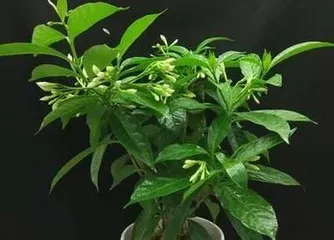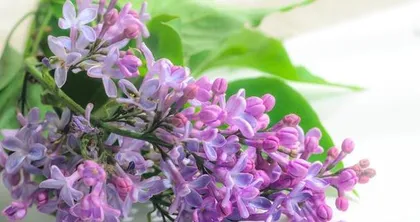Lilac is a beautiful flower with rich colors and a strong fragrance, making it a favorite among many people. However, in the cold winter, lilacs require special attention and care. This article will provide a detailed introduction to the techniques and methods for winter care of lilacs.

Understanding the Characteristics of Lilacs
Before performing winter care for lilacs, we need to understand their characteristics. Lilacs prefer mild climates and moist environments, they love light but are not heat-tolerant. Additionally, lilacs are shrubs and require ample space to grow.
Watering Appropriately
Winter is a relatively dry season, but overwatering can also harm lilacs. In winter care, we need to water moderately to keep the soil moist.

Paying Attention to Insulation for Lilacs
Lilacs are susceptible to frost damage in the cold winter, so insulation is necessary. We can add a protective layer around the pot, or move the lilac indoors to avoid frost damage.
Pruning Branches Appropriately
Winter is the dormant season for lilacs, and proper pruning helps balance the plant's nutrition. Excessive pruning can affect the normal growth of the plant, so it is important to prune moderately.
Fertilization Method
In winter care, we also need to fertilize appropriately. However, be careful not to use too much fertilizer, as this can harm the plant. A moderate amount of organic fertilizer can help lilacs maintain a nutritional balance.

Preventing Pests and Diseases
Lilacs are susceptible to pests and diseases in the winter. We can use physical and chemical methods for prevention and control, such as spraying insecticides and using yellow boards to trap aphids.
Regular Weeding and Loosening the Soil
During the growth of lilacs, grass and weeds can affect their growth. In winter care, we need to regularly weed and loosen the soil to ensure the normal growth of the plant.
Paying Attention to the Lilac's Location
In winter care, we also need to pay attention to the lilac's location. It needs plenty of sunlight and good ventilation, while also needing to avoid direct exposure to the sun or being hit by cold winds.
Paying Attention to Pot Drainage
Lilacs need to maintain a moderate level of moisture in the winter, but excessive water accumulation can harm their growth. In winter care, we need to pay attention to the pot's drainage to avoid waterlogging.
Avoid Moving the Lilac Frequently
In winter care, we need to avoid moving the lilac frequently, as this can affect the normal growth of the plant. If it needs to be moved, try to avoid prolonged sun exposure or exposure to cold winds.
Paying Attention to Indoor Temperature
If the lilac is moved indoors for care, we need to pay attention to the indoor temperature. The suitable temperature should be maintained between 15°C and 20°C, as temperatures that are too high or too low can harm the plant.
Avoiding Sudden Temperature Changes
In winter care, we need to avoid sudden temperature changes. If the lilac has been in a low temperature for a long time, the temperature should be gradually increased to avoid sudden changes harming the plant.
Paying Attention to Ventilation
In winter care, ventilation is also an important issue. We need to maintain good air circulation indoors to avoid excessive humidity, which is beneficial for the normal growth of lilacs.
Promptly Removing Dead Leaves and Branches
During winter care, lilacs may also have dead leaves and branches. We need to remove them promptly to keep the plant tidy and beautiful.
Through this article, we have learned about the techniques and methods for winter care of lilacs. We hope that everyone can carefully take care of their lilacs in the winter and allow them to grow healthily and vigorously.